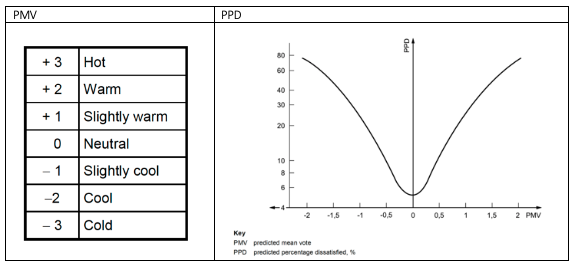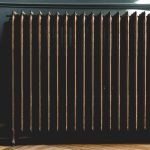Both standards cover the evaluation of modern, indoor, thermal environments including residential and industrial.
They both provide definitions, requirements, and parameters that need to be met within a certain range to predicted an operative temperature and, ultimately, thermal comfort. The two standards essentially cover the same variables, calculations, and ranges, but do differ in a few respects.
ASHRAE, or the American Society of Heating, Refrigerating, and Air Conditioning Engineers, first published the 55 standard in 1966 and has continuously updated it every 3-7 years. While this standard is internationally intended, it is most well recognized within the United States.
ISO, or the International Organization for Standardization, is a worldwide federation of national standards bodies, and is, therefore, broader and encompassing of more standards but at a less specified level.
Both Standards are formulated around four key variables
- Radiant temperature
- Air temperature
- Air velocity
- Air Relative Humidity
of which the average of radiant and air temperature forms the operative temperature. According to both Standards there are limitations on the variations allowable to maintain a comfortable indoors for various room requirements and occupancy loads.
Another requirement relates to summer comfort in air-conditioned rooms; it is intended to ensure that the humid limit is not exceeded: Systems designed to regulate the humidity should be able to keep a water vapor partial pressure below 1910 Pa (= 19.1 hPa) corresponding to a dew point temperature of 16.8 ° C.
The general output of data for each Standard is the Predicted mean Vote PMV and the Percentage of people dissatisfied PPD.
PMV
The PMV is an index that predicts the mean value of the votes of a large group of persons on the 7-point thermal sensation scale (see Table 1), based on the heat balance of the human body. Thermal balance is obtained when the internal heat production in the body is equal to the loss of heat to the environment. In a moderate environment, the human thermoregulatory system will automatically attempt to modify skin
- temperature and sweat secretion to maintain heat balance.
PPD
The PMV predicts the mean value of the thermal votes of a large group of people exposed to the same environment. But individual votes are scattered around this mean value and it is useful to be able to predict the number of people likely to feel uncomfortably warm or cool. The PPD is an index that establishes a quantitative prediction of the percentage of thermally dissatisfied people who feel too cool or too warm. For the purposes of this International Standard, thermally dissatisfied people are those who will vote hot, warm, cool or cold on the 7-point thermal sensation scale.

To evaluate the PMV and the PPD the standards are using the following input Data;

The main design principles we recommend for achieving occupant comfort are:
- Adequate insulation for your location. Consistent levels of thermal insulation allows for reduced heat losses across the building envelope and low energy inputs for heating and cooling.
- Reducing thermal bridging: to ensure comfortable conditions can be achieved economically, it is critical to reduce thermal bridging through the building envelope thereby keeping the outside out and the inside in. Common examples of thermal bridges are metal studs, non-thermally broken aluminium joinery, connection details cross walls, floors and roof.
- Air tight building; air permeability of the building envelope increases heat losses, causes drafts and can increase risks for condensation inside the building structure
- Adequate heating and cooling supply systems and appropriate use of solar shading and low-emissivity glass
- Fresh air supply to ensure that internal pollutants and humidity remains at acceptable levels




